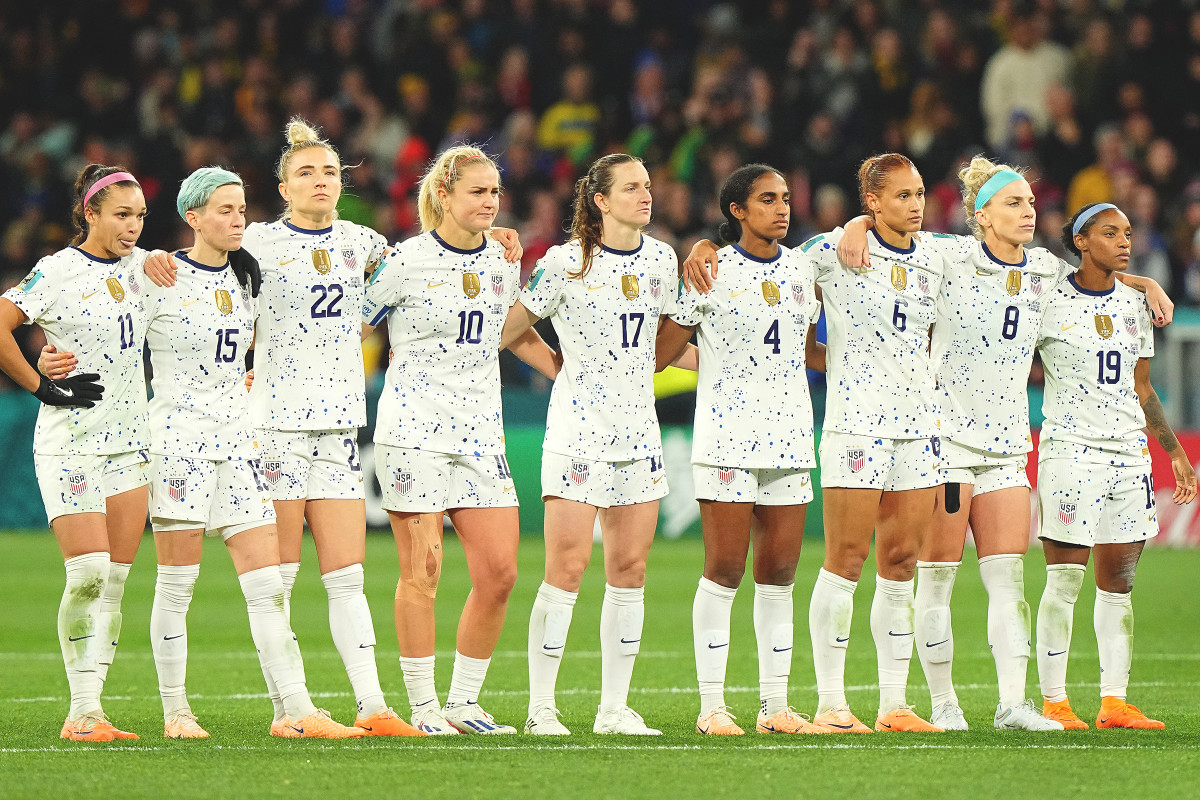What Went Wrong for the USWNT?
The casual cruelty of the game of soccer was on full display as the U.S. women’s national team was eliminated from the 2023 Women’s World Cup by the smallest of margins. Sweden handed Vlatko Andonovksi’s team its earliest exit in the World Cup, defeating the reigning champions 5–4 on penalty kicks, with Alyssa Naeher unable to keep out a tricky rebound after making a thrilling, potentially game-saving stop.
Many were skeptical of the USWNT’s chances against the Swedes after a disappointing showing in the group stage, but a savvy tactical adjustment buoyed the squad—the U.S. that opponents had come to know and fear was back. In an unexpected move, the typically conservative Andonovski called Emily Sonnett into the midfield, creating a double pivot with No. 6 Andi Sullivan. The shift allowed Lindsey Horan to charge into the attack, while providing outside backs Crystal Dunn and Emily Fox the ability to spring forward on the flanks. Connecting in the midfield and building up through the lines, the USWNT’s attack was humming, with the squad creating plenty of dangerous chances. Still, one thing eluded to the U.S., the thing that’s plagued the team all tournament: finishing. For that reason, the adjustment was simply too little too late.
Goals have been hard to come by in the Andonovski era, and this World Cup was no different. The team notched just four goals through four games, three of those coming against Vietnam. It's tough, if not impossible, to capture a third straight World Cup with that pervasive of a scoring drought. Logging 22 shots and 11 on target, the USWNT squandered a frustrating amount of opportunities in the final third against Sweden—and it didn’t help that goalkeeper Zecira Musovic had the game of her life, registering 11 saves.

The 0–0 scoreline through regulation was especially disheartening given the improvements the group made following its abysmal outing against Portugal, with the U.S. maintaining 58% of possession, dictating pace and tempo with 77% accurate passing on 583 attempts. For comparison, against Portugal, the USWNT only held 44% of the possession, connecting on 63% of just 300 passes. The midfield was primarily to thank for the upgrade. Sullivan and Sonnett anchored the center of the pitch, with an accurate pass rate of 78% and 89%, respectively. Finally, the USWNT looked in command, able to stay on the ball and maintain possession in the center of the park.
For all their efforts in the build-up, though, things broke down in the box. The final touch was simply—as it has been for some time—off. While it's true that players who could have risen to the occasion didn’t, and a moment of individual brilliance may have saved the USWNT from its soul-crushing fate, the scoring dry spell falls at the feet of Andonovski. Lethal talents like Sophia Smith, who is leading the NWSL Golden Boot Race with 10 goals, and Alex Morgan, who won the award in 2022 with 16 goals, were neutralized. Failing to cement a concrete attacking identity, the U.S. under Andonovski has often looked aimless and without any sort of chemistry. For that reason, the Andonovski experiment is likely over, with the World Cup loss almost certainly sealing his fate.
Winning only four of 10 major tournament games through the Tokyo Olympics and 2023 World Cup, Andonovski’s spotty track record has put him on the hottest of hot seats. Much of his USWNT tenure has been spent struggling with how to address the defensive midfield position in the absence of Julie Ertz. It's a cruel irony that in what will likely be his last consequential game with the USWNT, he finally got the decision right. The standard for this team is winning, though, not marginal improvement game-to-game, which means he is presumably on the way out. It never all came together under the coach (this World Cup a microcosm of that truth), and now the young players Andonovski brought into the fold, like Trinity Rodman, Naomi Girma, Alyssa Thompson and Emily Fox, will carry the torch for a team that will look a lot different. Hopefully that team can put the ball in the back of the net.
